I work as a microscopist in life sciences at the University of the Basque Country, in Bilbao, Northern Spain. I started using microscopes in 1993, while doing my PhD in the field of Cell Biology. Back then, we totally relied on film in order to capture the scientific discoveries observed under the microscope. And this was not an easy task by any means.
The plethora of cameras, film formats and lightning conditions was endless: we used 6x9cm plates for electron microscopy; 120 medium format film or Polaroid cameras; assorted 35mm film types and filters, specific for tungsten illumination and colour correction; extremely low ISO film to make copies of text documents, or high sensitivity film to capture faint fluorescent signals glowing on a dark background and so on. Moreover, each film had to be developed under very specific conditions. Thus, the road from observing a beautiful image under the microscope to presenting it in a scientific publication could get to be a real nightmare.
At our laboratory, we were very lucky to have an older lady working full time as a photography technician, so I could focus entirely on my experiments. However, this meant that I never got to know much about the tricks of film photography.
With the advent of digital, film was finally gone and all our microscopes have been transformed into highly efficient machines. They are able to obtain large resolution images at high speed and with great sensitivity, in a way I had never dreamed. I must confess that I love digital imaging, especially in the field of electron microscopy. Digital microscopy has become a crucial aspect of my amazing job as a microscopist.
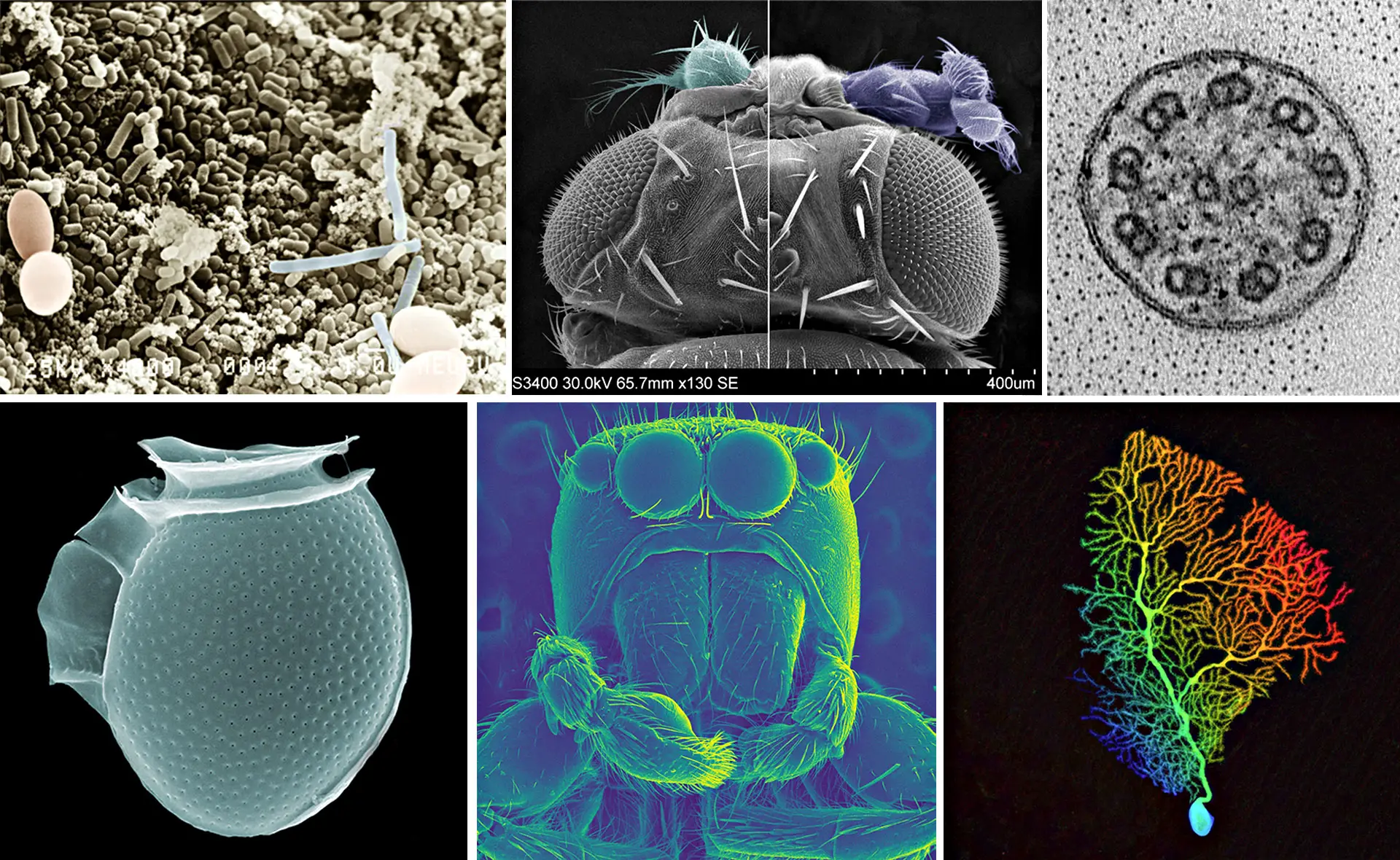
The old fridge
After 30 years of a “dark job”, the older lady finally retired and most of the film equipment was dismantled. However, there was this small fridge at the lab that kept calling me every now and then. It contained several boxes with the remains of the film era. We also had an abandoned darkroom, that we now use as an accessory room, in which we put noisy and heat-generating equipment.

I checked the material in the refrigerator. There were many boxes with hundreds of the individual 6x9cm kodak plates we used in the transmission electron microscope, and some rolls of 120 Ilford FP4 Plus we used in the Mamiya camera connected to our old scanning electron microscope. These two types of film were familiar to me. The rest I used without knowledge, as they were the sacred territory of our retired lab technician. Unlike me, she was a very meticulous and organized person with a difficult character. There were dozens of film canisters neatly organized in boxes, with the following written names: Tri X Pan 320, Ilford Pan F Plus, Kodak Tmax 100, Kodak Kodalith, Eastman Fine Grain Release and so on. Besides, there were several round metal boxes containing 100ft rolls of some of these films. They easily made 100+ rolls of assorted films. Unluckily, everything had expired in the 90s.
It was early 2011.
I started shooting film out of pity
Further back in time, my mom used to develop film at home when we were little, so somewhere in the back of my mind I had these images of hanging negatives, of wet paper photos sticking to the bathroom tiles, illuminated by a mysterious red light. She had a Canon Canonet she had bought in Japan in the 60s, while traveling around the globe after marrying a sailor. Later on she bought a Yashica FR1 with a 50mm f1.7 lens. I guess the crazy 80s took over and she abandoned her hobby. Twenty years later, on a visit to her house, I stumbled upon a box containing these two cameras and I looked at them with nostalgia. She said I could take them home if I wanted. I did.
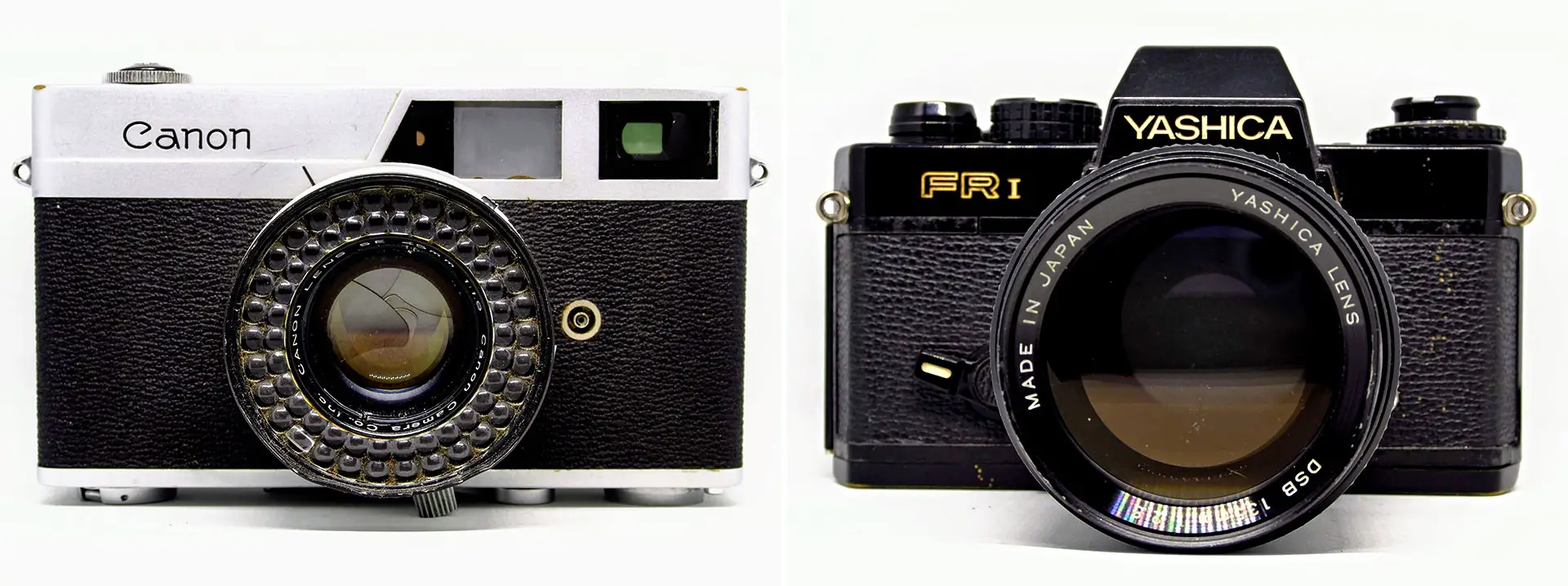
So I guess I started shooting film out of pity. The nostalgic presence of the film treasure at the lab and my old mom’s cameras awoke my interest in film photography.
From a non working Canon Canonet to a Minolta X-700
I started digging for information on the web. I checked my mom’s cameras. None of them worked properly. The Canonet had a problem with slow apertures, and the Yashica FR1 had the lens stuck on the mount and it was out of power. One day, while talking to my friend Luisi about my new interest, he said I could use his father-in-law´s camera. Luisi worked as a TV cameraman and knew about photography, and he brought me a Minolta X-700 with a Rokkor MD 50mm f1.4 lens. Ten years and about thirty cameras later, I still love it and it is one I will be keeping for sure.
I loaded a Kodak Tri X 320 and began shooting. Then I tried Ilford Pan F Plus. My daughters were already 7 and 9 years old, so I was starting to have time for myself again. I enjoyed going for a walk with a camera. Having a camera loaded with a 36exp film was a great excuse to go out.
After 14 rolls the Minolta stopped working (it came back to life a year later by simply replacing the batteries), so I tried the Canonet, but after 7 rolls of unexpected results I finally gave up. I began searching for cameras, and reading and learning about technique and types of photography. Luckily, I borrowed a Leica M2 from a friend’s relative who had passed away. After 13 rolls, her family found out it was quite expensive. I heard they were arguing about it, so I gave it back right away. The Elmar lens was not in good condition, but the sound of its shutter is still the best I’ve heard. It is weird to talk about sound in photography.
When I want to emulate that shutter sound, I revive a Leica MDa that was coupled to our Leitz Reprovit, a device we used at the lab to make slides from written text, using very low 6-12 ISO film. The Leica MDa is a Leica M4 without the rangefinder. This means there is no viewfinder to compose the image and no way to focus. I use it with a 28mm Konica Hexanon using hyperfocal focusing. So far I have shot 7 rolls with it, and it’s an experience worth trying every now and then. Another beautiful rangefinder I enjoy is a FED 2 brought from Ukraine by a member of my family. The 50mm Industar lens is better than the Elmar on the Leica M2 but, as my sight is getting older, I wish the viewfinder was a bit larger.
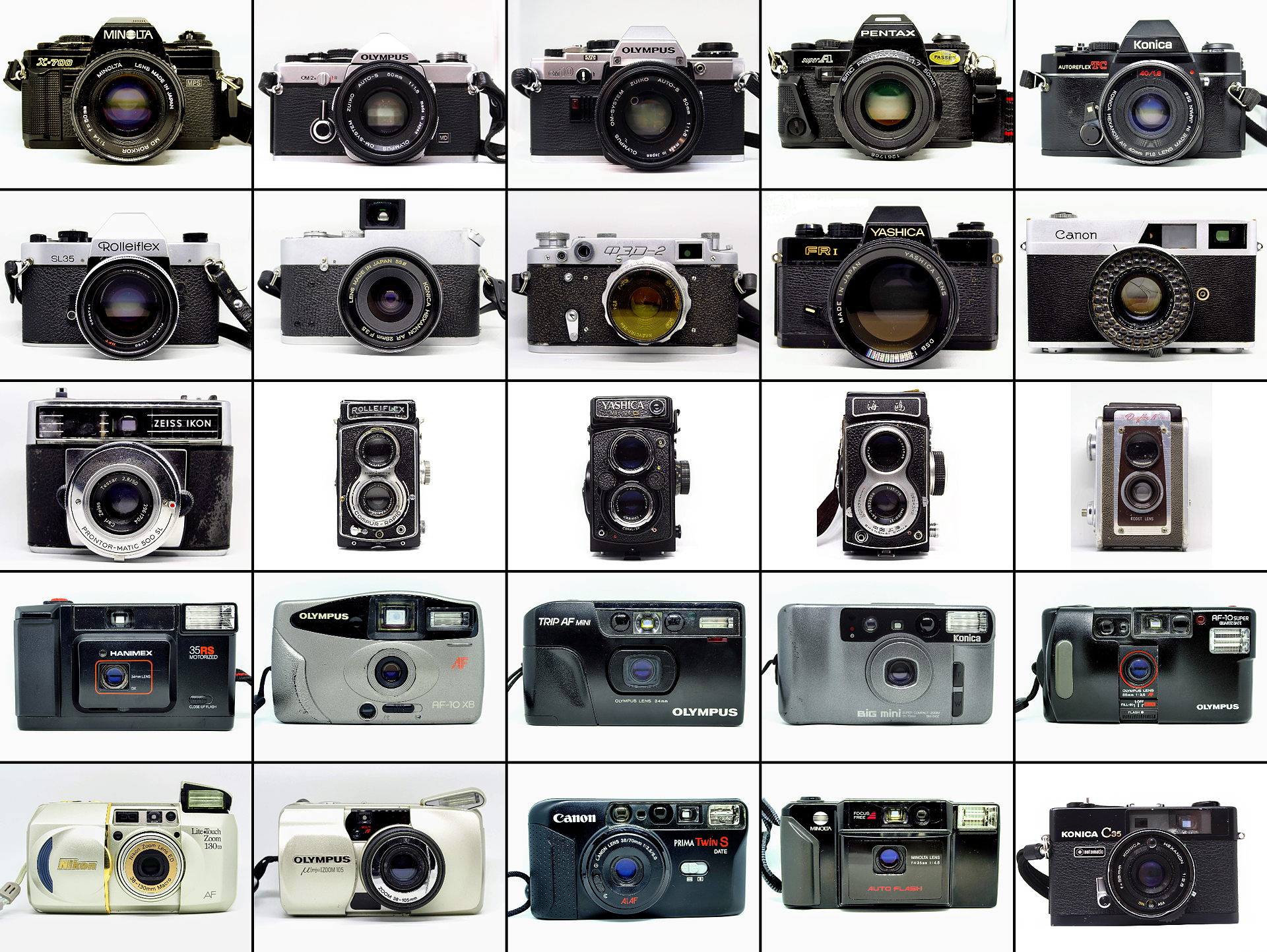
As the years went on, I started acquiring and using other cameras. None of them are legendary, but I enjoy trying new cameras I get from friends or buy at affordable prices to local owners. Besides the mentioned Minolta X-700, I have some other SLRs, like a couple of Yashicas (FR1 & FX3 super), a Konica Autoreflex TC, a Pentax Super A, two Olympus (OM10 and OM2n) and a Rollei SL35. I bought the Rollei because it included a Zeiss 50mm f1.4 lens. When pixel peeping, I don’t find much of a difference between this celebrated lens and other 50mm glass I own, but it has something for portraits. However, I also like the mentioned Minolta f1.4 (which is sharper at all apertures), the konica Hexanon f1.8, a Pentax f1.7 or the Olympus Zuiko f1.8. Old 50mm lenses are so much fun. I also own a Yashinon DS-M 50mm f1.4, one of the old radioactive lenses due to the presence of Thorium in the glass. I have measured its radioactivity using a Geiger counter, and it is surprisingly high, so take it into account if you own one of these radioactive lenses. The good side of it is that it is always clean of fungus, lol.
I started fighting against the medium format with a Seagull 4A, then borrowed a Yashica Mat 124G and a 1938 Rolleiflex from my friends Iker & Nani. I love them all (friends and cameras), but after shooting 8 rolls, I came to the conclusion that I need to be more organized and use these cameras for a specific session or kind of shooting.
A compact camera with a fixed lens
A few years ago I started shooting with compact point and shoot cameras, most of them with a fixed lens. I didn’t know they existed, as during the 90s, the point & shoot cameras we used had a noisy and ugly protruding zoom lens. As with my other cameras, all of them were obtained locally at a low price or were gifts from friends who had them abandoned at home. I ended up with nearly ten compact cameras, and I must say that all of them are fun and good enough for casual photography.
Compact cameras are fun to carry to a friends gathering, at least it was until the pandemic put a mask on our faces. Regarding quality, once you digitize a negative, you can play with your favourite computer or phone app to obtain an image that is surprisingly ok for social media. On many occasions, I can’t tell if an image was taken with a compact camera or a SLR. That’s how good they are. Or that’s how bad a photographer I can be.
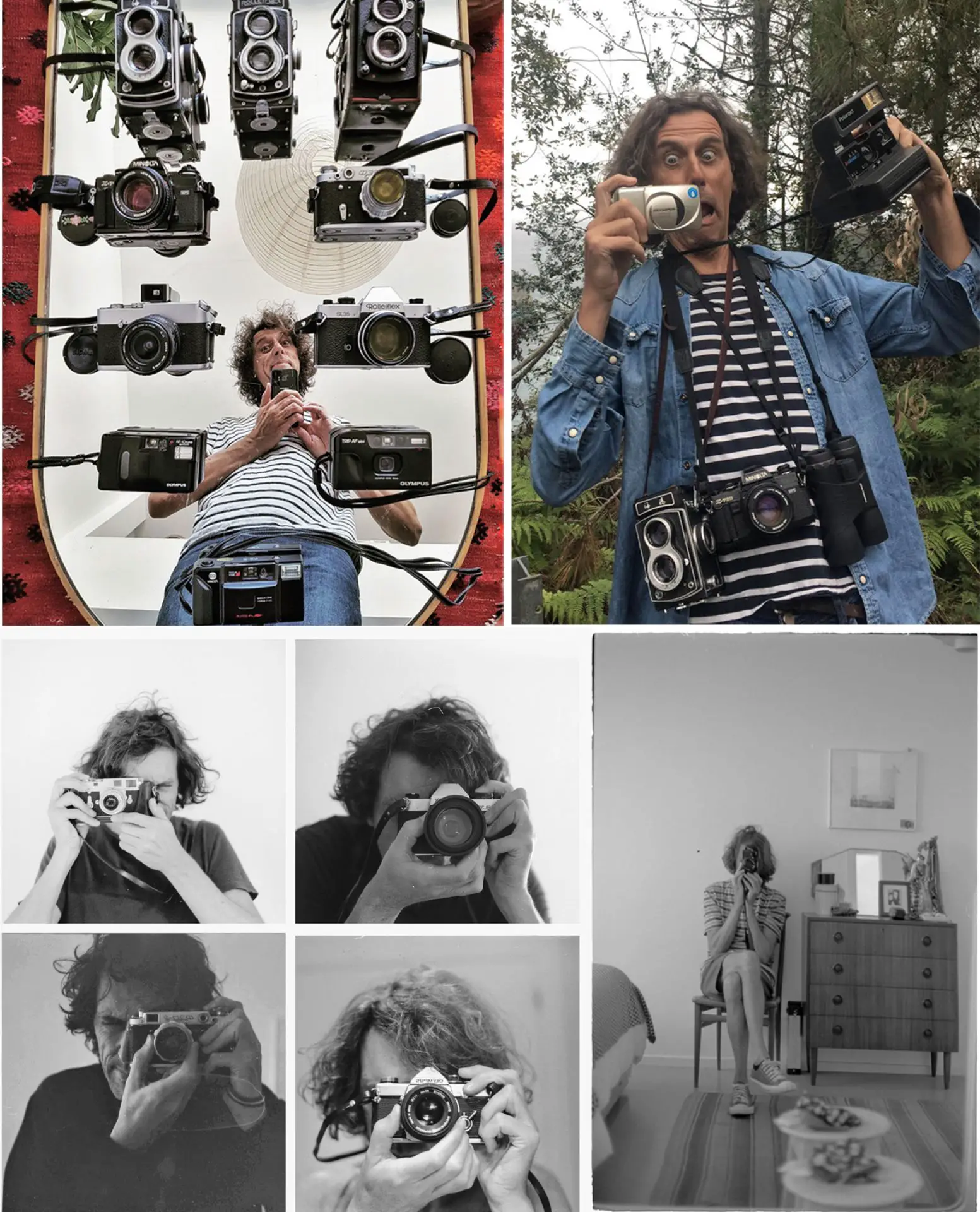
As you have probably noticed, I may suffer a little Gear Acquisition Syndrome or GAS. That is why I am planning on going back to basics and getting rid of most of my cameras. I think a couple of cameras of each type would be more than enough for my needs. I think I am keeping my Olympus OM2n, because I love everything about it, and the more modern Minolta X700, with its bright viewfinder, its great lens’ and my personal attachment to it. I should let the rest of them find new owners and adventures. They deserve it.
The darkroom
In the old darkroom, I found some JOBO tanks and reels from the early 70s, and two bottles of expired Kodak Tmax developer and Ilford rapid fixer. Without even checking if they were adequate for the film types I had used, I bought the same two reagents and went inside the darkroom with little idea. Loading the film on the rotten spirals usually takes forever, and the tanks leak or they open up unexpectedly. It is a part I really enjoy, when chaos takes over and patience is on high demand. However, I cannot imagine the pressure and responsibility to develop film as a professional job, instead of being only a personal hobby.
One of the best moments is when you take the negatives out from the reels, after the final wash, and you find there are pictures in it. Pictures from months ago, many of them you had forgotten, or some photos you thought were going to be good the instant you pressed the shutter. There are moments from a day you went for a walk with your daughter to the old part of town, or to the cliffs or the beach in the winter time.
I write down every film type, camera and processing conditions. While checking the numbers and doing some statistics for the preparation of this article, I realized I am not very prolific, as I have shot about 100 rolls using 21 different cameras since I started shooting film in 2011. I have also noticed that I have nine cameras I have not used yet. Shame on me!
I started scanning the first rolls with a HP 8200 scanner, in RGB mode, and then with a much better Epson V750. However, it was too slow, so I ended up digitizing them using my digital camera (first an Olympus EP1 and now with an EM5), using bellows and a Leica Focotar enlarger lens. Good enough for my needs.
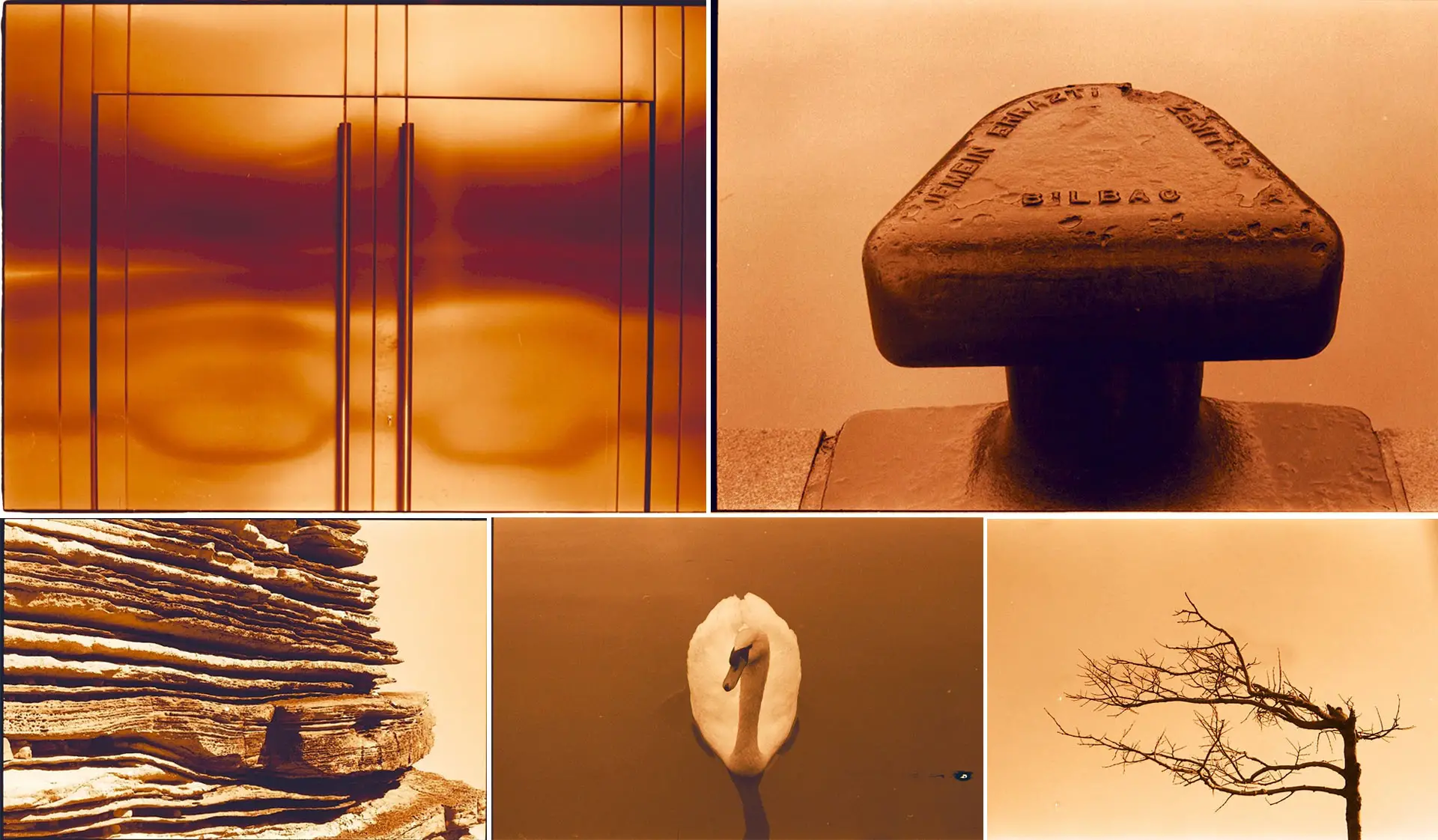
After almost 10 years I have run out of most of my expired film. I still have about 50 rolls of Kodalith and Eastman Fine Grain Release in the fridge, and they are fun but very “experimental” to shoot. They are both orthochromatic, so they can be developed under a red light, which makes processing time easier to control. I just got a new developing tank and a bottle of Rodinal, which seems to be more appropriate for these low ISO high contrast films. Lately, I have been testing semi stand long time development, and I will try to be more consistent in the dark room from now on. However, I find that when I get proper developing settings, the images get a closer look to being digital, and they lack that antique look and character given by expired film and chemicals.
In the following chapter, I will show you some of the pictures I have taken throughout the years, while trying to find a photographic style. I will also discuss the benefits of film photography when compared to digital and I will ask myself if it was all worth it. Of course, you already know the answer. See you soon…
Share this post:
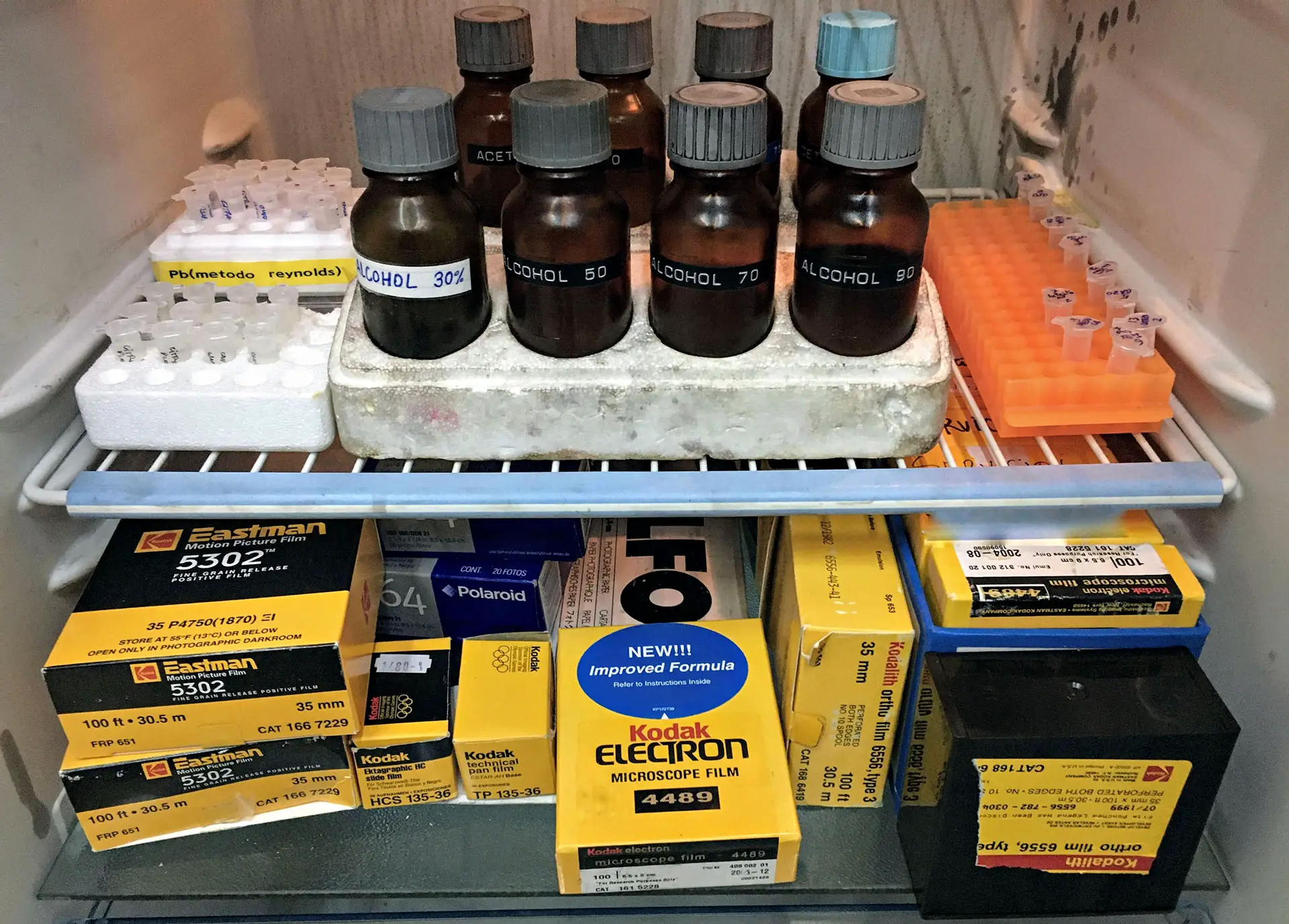








Comments
David H Thurman on The Remains of the Abandoned Microscopy Lab – Shooting Expired Film – Pt 1 – by Ricardo Andrade
Comment posted: 30/10/2020
The love and appreciation are so great and so darn irresistible! I always think the camera itself is the real genius--
from invention to design, engineering, parts fabrication, all the tiny little springs, mirrors, curtains, shutter types
operating under time stress and duress and then the childlike eager beaver user who picks it up and walks about feeling
no legs or shoes or pain looking and finding each one's own version beauty of god and the world in the summary of that single frame...
The great ones (HCB) really have brought out the world as pure ART--sober, elegant, peaceful, human, and beautiful. Photography is "girls on film", which is the world, us in it, and aren't we addicted to that...! Thanks.
Rock on The Remains of the Abandoned Microscopy Lab – Shooting Expired Film – Pt 1 – by Ricardo Andrade
Comment posted: 30/10/2020
Brian Nicholls on The Remains of the Abandoned Microscopy Lab – Shooting Expired Film – Pt 1 – by Ricardo Andrade
Comment posted: 30/10/2020
Anders on The Remains of the Abandoned Microscopy Lab – Shooting Expired Film – Pt 1 – by Ricardo Andrade
Comment posted: 30/10/2020
Ricardo Andrade on The Remains of the Abandoned Microscopy Lab – Shooting Expired Film – Pt 1 – by Ricardo Andrade
Comment posted: 30/10/2020
So far I am enjoying my GAS. I always ask the owners of the cameras about their past, about the story behind them. Most of them belonged to some relative and they had been stored away and unused for some time, so I guess I am giving them a second life. I wish I had more time to test them all...
Harry Machold on The Remains of the Abandoned Microscopy Lab – Shooting Expired Film – Pt 1 – by Ricardo Andrade
Comment posted: 30/10/2020
My GAS is by far worse than you ever was...but who cares... Any woman rather accepts a man with such an harmless disease rather than some others which are more destructive to any kind of a relationship...
I worked for Leica in Vienna for a few years and I never managed to get my full salary at the end of the month....there was simply by far too much temptation around...it was hell but at the end; it was the most wonderful one at the same time....
I myself use both, film and digital and I enjoy both. Though the looks of an expired film, together with a vintage camera and especially a lens back from this more expressive period of time means a lot to me..
Please keep going and supply us all with your chapter 2 very soon...and create a chapter 3 on top of that in the near future as well....
With my best wishes and many thanks to you, Ricardo Harry
Lukas Meekers on The Remains of the Abandoned Microscopy Lab – Shooting Expired Film – Pt 1 – by Ricardo Andrade
Comment posted: 31/10/2020
Comment posted: 31/10/2020
Scott Gitlin on The Remains of the Abandoned Microscopy Lab – Shooting Expired Film – Pt 1 – by Ricardo Andrade
Comment posted: 01/11/2020
Comment posted: 01/11/2020
Ben Garcia on The Remains of the Abandoned Microscopy Lab – Shooting Expired Film – Pt 1 – by Ricardo Andrade
Comment posted: 02/11/2020
Ricardo Andrade on The Remains of the Abandoned Microscopy Lab – Shooting Expired Film – Pt 1 – by Ricardo Andrade
Comment posted: 03/11/2020
Comment posted: 03/11/2020